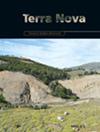基于碎屑锆石地质年代学的出处诊断和最大沉积年龄约束的局限性:生育率偏差
IF 1.7
3区 地球科学
Q2 GEOSCIENCES, MULTIDISCIPLINARY
引用次数: 0
摘要
碎屑锆石 U-Pb 地球年代学(DZG)被广泛用于地层的出处分析和最大沉积年龄(MDA)计算。为了评估这种方法的地质局限性,我们对塔里木盆地西南部的中新世火山碎屑砂岩和非火山碎屑硅质砂岩进行了 DZG 以及大块岩石学和重矿物分析。虽然这两类砂岩的体质岩石学和重矿物特征大相径庭,但它们表现出相似的碎屑锆石年龄谱,因此代表了一种不太常见的情况,即仅基于 DZG 的解释可能会与体质沉积物的出处不一致。大多数基于锆石的火山碎屑砂岩的 MDA 为 12.3 至 14.8 Ma,偏离了其约 11 Ma 的真实沉积年龄。11 Ma 的真实沉积年龄。火山碎屑砂岩和硅质砂岩的锆石年龄谱相似,基于锆石的 MDAs 误差为 1-4 M.y.,这归因于共生碱性岩浆源的锆石富集度较低。这项研究强调了综合分析来源和年代地层的重要性。本文章由计算机程序翻译,如有差异,请以英文原文为准。
Limitations of provenance diagnoses and maximum‐depositional‐age constraints based on detrital‐zircon geochronology: the fertility bias
Detrital zircon U–Pb geochronology (DZG) is widely used in the provenance analysis and calculating maximum depositional ages (MDAs) of strata. To assess the geologic limitations of this approach, we conducted DZG coupled with bulk‐petrology and heavy‐mineral analyses of Miocene volcaniclastic and non‐volcanic siliciclastic sandstones from the SW Tarim Basin. Although these two sandstone types display greatly different bulk‐petrography and heavy‐mineral signatures, they exhibit similar detrital‐zircon‐age spectra, and thus represent a less common case in which interpretations based on DZG alone may misalign with bulk‐sediment provenance. Most zircon‐based MDAs of volcaniclastic sandstones range from 12.3 to 14.8 Ma, deviating from their ca. 11 Ma true depositional age constrained previously. The similarity of zircon‐age spectra in volcaniclastic and siliciclastic sandstones and the 1–4 M.y. the error of the zircon‐based MDAs is ascribed to the low zircon fertility of coeval alkaline magmatic sources. This study emphasizes the importance of an integrated approach to provenance analysis and chronostratigraphy.
求助全文
通过发布文献求助,成功后即可免费获取论文全文。
去求助
来源期刊

Terra Nova
地学-地球科学综合
CiteScore
4.80
自引率
8.30%
发文量
59
审稿时长
2.3 months
期刊介绍:
Terra Nova publishes short, innovative and provocative papers of interest to a wide readership and covering the broadest spectrum of the Solid Earth and Planetary Sciences. Terra Nova encompasses geology, geophysics and geochemistry, and extends to the fluid envelopes (atmosphere, ocean, environment) whenever coupling with the Solid Earth is involved.
 求助内容:
求助内容: 应助结果提醒方式:
应助结果提醒方式:


